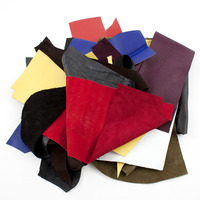Beader’s dictionary
L
LABRADORITE (See products)
Labradorite is a stone that is part of the feldspar family. It is usually dark gray and iridescent, but can also be color-free. Its main characteristic is its metallic play of colors, called labradorescence. This play of color’s most common colors are green and blue. However, at times the whole spectrum of colors can be detected, thus increasing the value of the stone. It is a fragile stone that can be opaque or translucent. This stone is often used for cabochons and beads. However, color-free or translucent ones are often cut in facets. Main deposits are located in Canada, Australia, the United-States, Madagascar, Mexico and Russia. Labradorite takes it name from it “type region”, Labrador in Canada.
LAPIS-LAZULI
Lapis-Lazuli is an ornamental stone that derives its name from the latin word lapis “stone” and azul “blue”. This opaque blue stone (veined or stained) violet or greenish blue is made of lazurite (25% to 40%) and sometimes many other stones such as pyrite (small metallic broken pieces). A strong concentration of these components, often white or gray will dampen the stone’s blue color. This stone is sensitive to harsh chemical like acids, household products and high temperatures.
This stone has been used for more than 7000 years. Through history, this stones has been used to make attires, wall coating, mosaics, to make pigments, decorative objects and cameos. Nowadays, lapis-lazuli is often cut in cabochons or in beads for the jewelry industry. Deposits are mostly found in Afghanistan (for more than 6000 years), Russia, Chili, Myanmar, the United-States and Pakistan.
A little bit of history: In the Middle-Ages, the lapis-lazuli was used in paintings to pigment the bluish color of seas, oceans, rivers that are abroad. Michael-Angelo used a bit of pigment to paint the sky in the Sixtine Chapelle’s ceiling.
LEATHER (See products)
Natural leather is made from animal skins. Usually leather comes from large mammals such as bovines or Suidaes (pigs, wild boar, etc.). At times varnished, it can be found in several different colors although the most prized colors are the natural shades. Leather strings are very resistant and yet remain very flexible.
LOOM (See products)
Tool made of a metal base. The base has two separating springs and two thumbscrews. The screws are each inserted in a wooden bobbin that has a nail that stretches the chain’s strings. The chain is made from the rows of strings that guide and support the weaving. The weft is made of the intertwining of the chain’s strings and the weft thread that constitutes the weaving. This tool is used to make regular and flat weaving. It is ideal to make large simple patterned bracelet.
LOOP (See products)
In the fashion jewelry industry, a loop is a small ring attached to a link or a charm and is used to link the element to which it is attached to another. It can be handmade; made using metal wires shaped with round pliers. To create another link, charms, clasps, chains, connector or even another loop can be attached to the loop.












